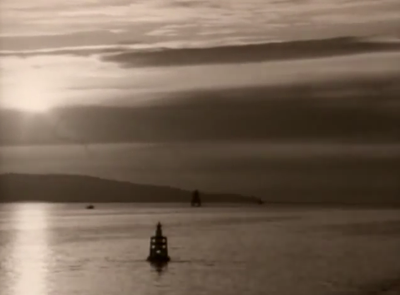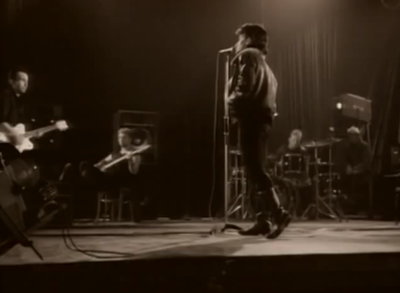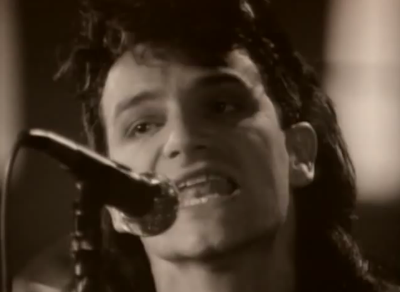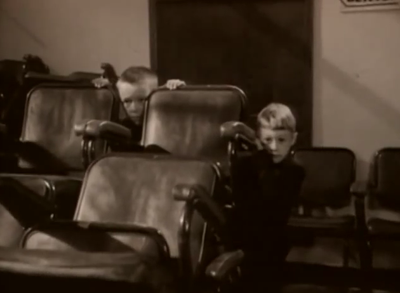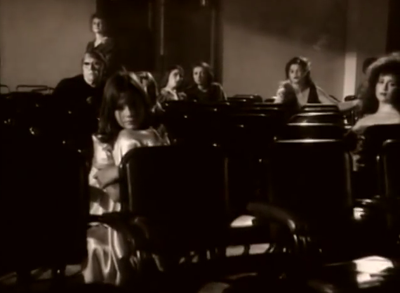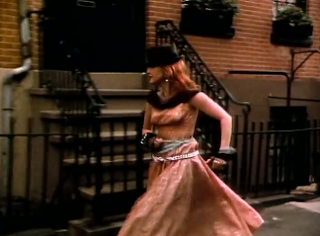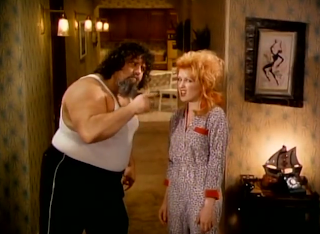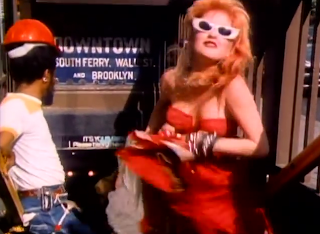Some White Irish Dudes - Pride (In the Name of Love) by U2
Published
There was a brave man who fought against injustice. He lead a movement that changed the world. He had a way with words. My favorite quote from him is, “You can’t help it if a bird flies over your head, but you don’t need to let him make a nest in your hair.” That man was Martin Luther.
Some time later a man was named after him. Today we celebrate that man.
I don’t really have too much to say about Dr. King. I’m sure other people will say things better. Also, despite all of his wonderful qualities I don’t think he had anything to say about music videos. I never heard him say anything that funny, either. Jesse Jackson definitely has points on him there.
Music videos, though, have something to say about Dr. King. Specifically, U2 in their video for Pride (In the Name of Love). In case you have forgotten, you should always whisper the part of the song title in parentheses. Doesn’t that make it intensely creepy? Try saying the name of this song to someone on the train and see what kind of reaction you get.
U2, as is well established, is terrible. I don’t mean that their music is bad, because a lot of their songs are quite good. They are terrible because they act so important. They pretend like they are fighting for all sorts of causes but, in fact, they are just musicians. Playing music does not help anyone. All it might do is help someone emotionally. If I’ve learned one thing from feminism (note: I haven’t) it’s that emotions are totally unimportant and the only things that matter are logic and general manliness.
Pride (In the Name of Love) is actually about Dr. King. “Early morning, April 4, shots ring out in the Memphis Sky. ‘Free at last.’ They took your life. They could not take your pride.” Ugh. Doesn’t hearing those lyrics make you lose any positive feelings you might have had for the song? Also, the lyrics seem to contain some factual errors. Who are the “they” U2 refers to? Wasn’t Dr. King murdered by a single man? Or are we all guilty of the conditions that lead to his death? In that case, shouldn’t it be “we” instead of “they”? These are the questions that plague me.
Anyways, imagine you are in a band that doesn’t really know much about Martin Luther King but you wrote a song about him anyway. What would your video look like?
Apparently this:
Do you notice something missing from this video? Yes, black people. I guess you could call it a bold choice to make a video for a song about Dr. King and only use white actors, but bold doesn’t always equal good.
The video is entirely in black and white and opens with a bleak landscape.
Then the band plays in a weirdly empty auditorium.
The band is really casual about it for some reason.
See the singer with his hands in his pockets? Did he not want to come into work that day? Also, the bass player is sitting down with his feet up. U2 is really phoning it in here.
After a little bit the band decides to do a tiny bit of work.
I think the singer is doing a bird impression here.
The singer inexplicably starts shaking like he’s in a big tent revival.
Is this supposed to indicate something about Dr. King’s preaching style? I think it is more likely that he got bit by a snake for religious reasons.
Suddenly two white kids appear in the auditorium.
Eventually the auditorium is 1/3 filled with white people.
It’s a Dr. Martin Luther King, Jr. Day miracle!
This video is pretty boring. I don’t understand what it has to do with the subject of the song. I feel like we are supposed to think that U2 is a very serious and important band. Well, I don’t.
So there.
-PTD
Free-for-all Friday: How to Appreciate Pop Music - Part 1, Key Changes
Published
Welcome to another edition of Free-for-all Friday on Another Flavor!
I have been called many things. Pedant. Mansplainer. Sex bicycle. But I’ve never been called an educator. Not even when I was teaching other people things. Today I want to use my skills as a pedant and sex bicycle to teach about the appreciation of pop music. This may or may not be an ongoing series, so I thought I better put “Part 1” in the title.
Now, you might be thinking, “Don’t most people already enjoy pop music? Isn’t that why it is called pop music in the first place?” While it may be true that most people enjoy pop music after a fashion, they are doing it wrong. Dead wrong. You might think you are enjoying a song, but without the proper knowledge your enjoyment is a hollow shell. A solid foundation in music theory, rather than being a hindrance to enjoying music, is a boon. You’ll start noticing things that you didn’t notice before. You’ll develop an appreciation for the art of songwriting and nuances of performance that will cause you to sneer at all the philistines surrounding you. Eventually you’ll become unbearable and spend all your time listening to Borbetomagus:
All joking aside, I do think learning a little music theory enriches your life and enhances your appreciation for music. You can find a number of books out there by hacky, faux-western composers about how to enjoy classical music but I think there is a gap when it comes to pop music. Pop music operates on the same general principles as classical music, but in practice it ends up pretty different. My goal with this series is to talk about some common techniques used in pop music so you can start listening for them in any music you might be listening to.
As a note at the beginning, a lot of people are really down on music theory. They think it is a set of rules that stifles creativity. It isn’t. The origin of music theory was looking at existing music and describing trends found in it. It’s not like someone sat down and made up a bunch of rules that all composers then had to learn and follow. It was more like a bunch of composers all happened to do the same things because they sounded good and someone else noticed and wrote it down. It’s a lot like science that way. Scientists don’t create the laws of nature, they try to figure them out from observing nature.
As a writer of music, knowing music theory teaches you what other people have done when confronted with a musical problem. Or explains why certain music makes you feel a certain way. You can then use these tools to help you rather than having to start from scratch with every piece of music. A car maker doesn’t have to discover the wheel independently and then try to invent the internal combustion engine. That is more work than any one human can do. Rather, they learn what other people have already learned from books and then try to add to that knowledge.
As a listener, knowing music theory enriches your experience as well. Hopefully today’s post will show you that as you hear more about how songs are constructed.
Today, we’ll be talking about key changes. Almost all pop music is tonal, which means it exists in a key. You may have heard of a song being in C major or F-sharp minor. That is the key. Each key has a tonic note which can be thought of as home base. Listen to this, Louie Louie by The Kingsmen:
The riff, “Bah bah bah. Bah bah. Bah bah bah. Bah bah,” keeps repeating. The first three “bah bah bahs” are the tonic. The riff keeps returning to it. One trick is to think about what note sounds right for the song to end on - that is usually the tonic.
In a key change, the tonic of the song changes. For example listen to this song, Livin’ On A Prayer by Bon Jovi, and pay close attention to what happens at about 3:25 when the chorus comes back around.
Did you hear that? The last set of choruses is higher than the previous ones. The key has changed. If you need to compare, click around in the video and listen to the first chorus side-by-side with the last one. The key change will be easy to hear.
This is the most common type of key change in pop music. Raising the key by a bit (in this case I believe it is by a minor third, but don’t worry if you don’t know what that means) is a way to add excitement to the end of the song. Usually the singer moves to the very top of his register which gives more emotion and lets him get screamier. Also, you usually hear the chorus at least 3 times in a pop song and this gives a little bit of variety.
This isn’t the only way a key change can work in pop music. Sometimes a song will have the verse and chorus in a different key. Frequently this will mean moving from a minor key in the verse to a major key in the chorus. I don’t think I can explain major verses minor, but we usually think of major as being happier which makes sense for a chorus. I’ll try to talk more in depth about types of keys in a future post. Just so you can hear an example of a song that changes from a minor key to the corresponding major key check out this video for Ana Ng by They Might Be Giants:
Do you hear the change?
For a different example, check out this video for Man! I Feel Like a Woman by Shania Twain (I wrote a [whole post about this video](/posts/the-best-thing- about-being-woman-man-i/) before):
The verses of this are in a minor key and the chorus shifts it up a fifth and to a major key. What does that mean? First, listen to the chorus and hum what you think the tonic note is. Then, listen to the chorus and do the same. Notice that you are humming a different note. These two notes are a certain distance apart. The distance between two notes is called an interval. This particular interval is a fifth which is a very important interval in music. We’ve been talking about tonic notes. For every tonic there is a note considered the dominant. The dominant is sort of the opposite of the tonic, but it also is the chord/note that leads back to the tonic. We can spend more time talking about tonic-dominant relationships in the future, but this switch of a fifth is very common in all types of music.
As a side note, notice how this song moves very naturally from the key of the verse to the key of the chorus, but that it is a little unnatural in how it moves from the chorus back to the verse. Doesn’t it seem abrupt? The way songs transition from key to key can be quite different, some changes are so smooth you hardly notice them and others are sudden jumps with no preparation. Shania Twain gives us both in one song, which is fun.
As a final example of key changes in pop music we’ll take what we’ve learned and listen to an example of a song that’s a little more sophisticated. Here it is, Up Up and Away by the 5th Dimension:
This song is all over the place and it is fantastic! Now that you’ve heard some examples, how many key changes do you hear? Approximately 5 million, right? But it also seems very natural. This is a great example of how key changes can enrich a song and how knowing about key changes can distract you from the fact that the lyrics to this song are really stupid.
I hope learning a little bit about key changes helps you enjoy pop music even more. If you enjoyed this, I plan to talk even more about the appreciation of pop music in future posts. Let me know what you are most interested in!
I’ll see you next week with more music videos.
-PTD
Satorial Sursday: Cyndi Lauper Dresses Ridiculously and I Love It
Published
Welcome to Satorial Sursday here on Another Flavor! Every Sursday we discuss the crazy clothing and general appearance of people in music videos.
I don’t have a ton of time so I’ll try to keep this brief. I was shocked to discover that I’d never written about Cyndi Lauper on Another Flavor, especially on a Sursday. I mean, just look at her!
Specifically, this look:
Her whole look is a combination of formal and hobo. She wears a formal prom- type dress and a formal hat. The way she has the hat jauntily tilted, though, really ruins any formality it might have had. The collar/shoulder covering thing on her dress just screams cheapness. Also, she wears chain belts on the outside of the dress. What are they holding up? Is she wearing invisible pants? I refuse to accept belts only for fashion. Finally we have her strange gloves and wrist things. Are those puffy wrist poofs attached to the gloves or separate? The overall effect is one of delightful whimsy and ramshackle charm.
Also, her hair color is fantastic. It is one of those colors that no real person has ever had. Why should we limit ourselves to colors found in nature for our hair? There is no reason.
There are some other fun outfits in this video.
I’m not really talking about the dad character, but he is wearing a real winner here. Lauper is wearing what I first assumed were pajamas. Now I’m not so sure. Is it just a really unflattering pants suits of some sort? Is it a work jumpsuit? No matter what it is, it is fun.
The final outfit we’ll look at is this one:
Those glasses are so cool. They are those terrible 1950s glasses, but are also sunglasses. She is wearing a nice red dress with punk-rock type chains on her wrists. Again we have a bizarre contrast.
If I didn’t really like Cyndi Lauper I might think that her look is a contrived hipster-ish thrift-store-based ironic joke. But she just seems to be having so much fun. And girls just wanna have fun. They just wanna. I’ll assume women want to have fun, too. But maybe not just have fun.
-PTD
